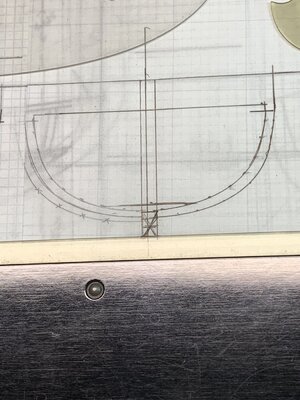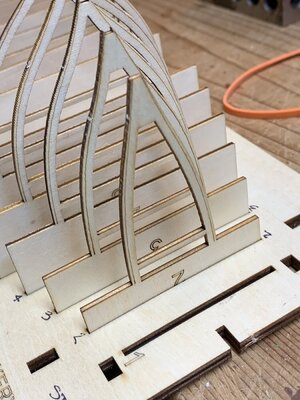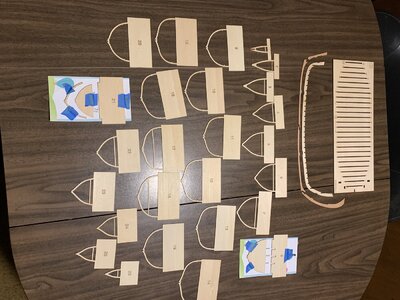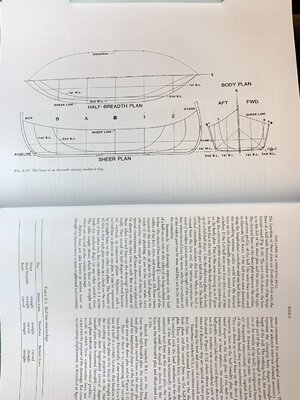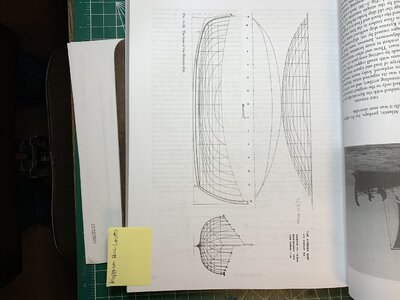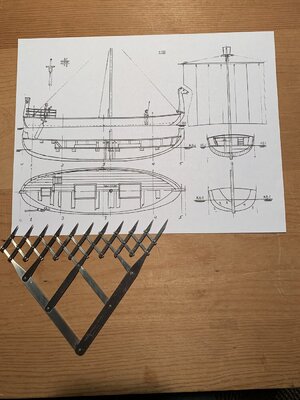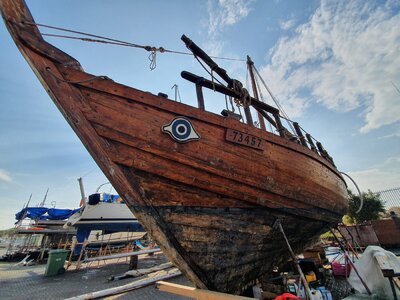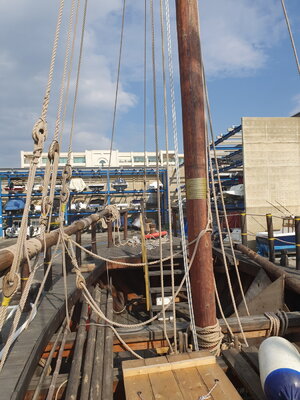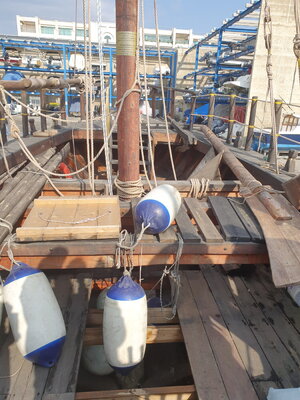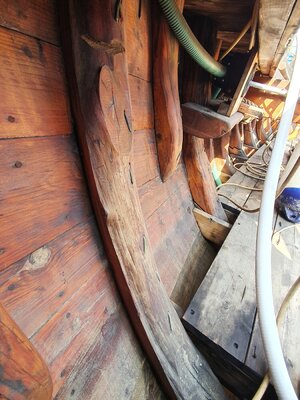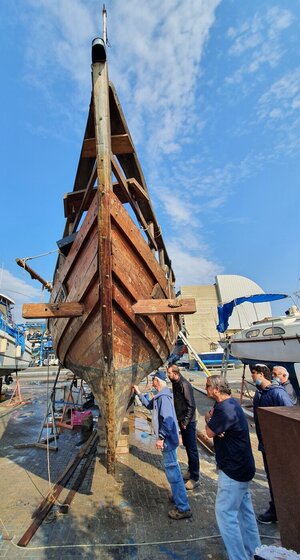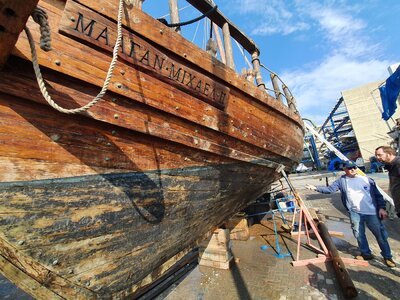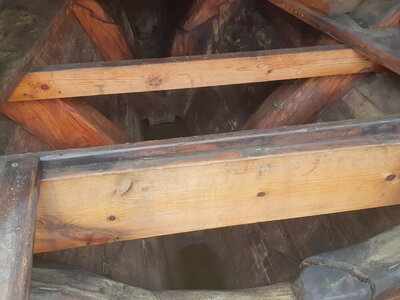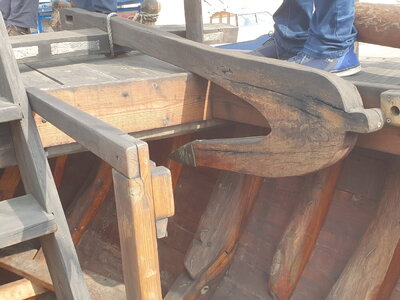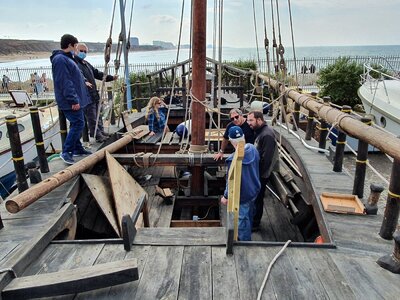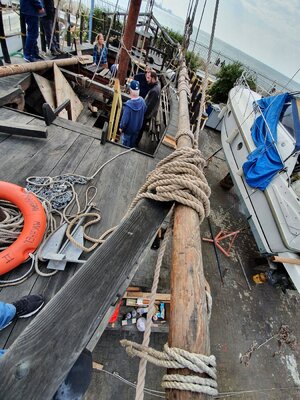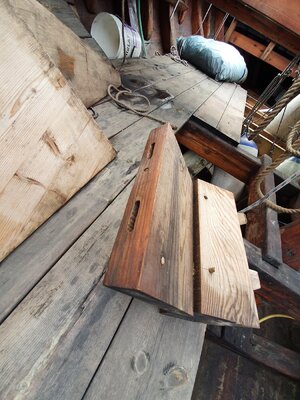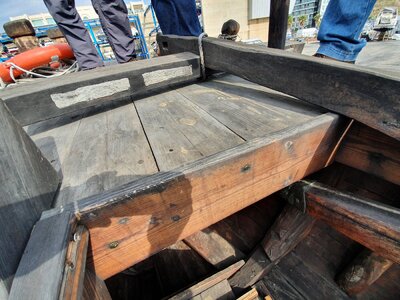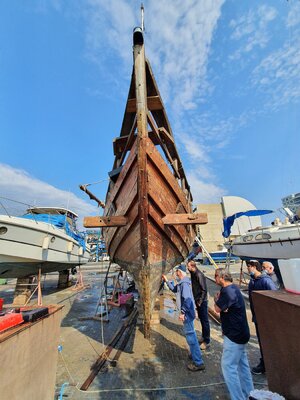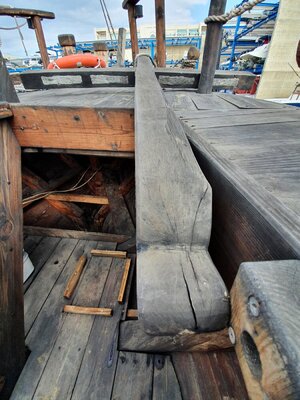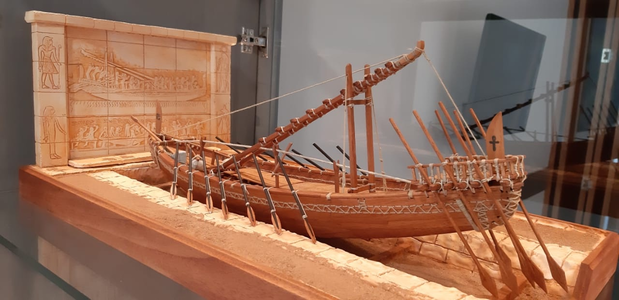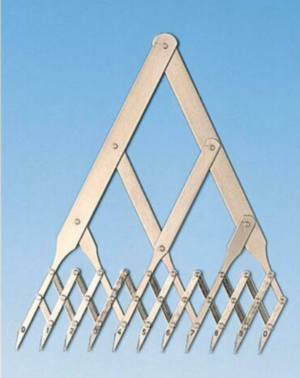Have a nice Christmas, Rich. And again a very interesting project. I am with you in spirit ;-)
Thank you for the Christmas present of the link and detailed photos. I had previously read an academic paper comparing the wood and construction of both wrecks. Your photos of the reconstruction add to my data bank of ships of the 5thc BC. Much later than the trade boat that I am trying to work out for hull lines.
As stated above there are conflicts between the plan drawings so I went back to the beginning using the repositioned drawings to cast new lines using both the compas and graphic (45 degree turn from horizontal to vertical) offset points. Without additional diagonals on the hull plan and the corresponding half hull lines The curves become more a work of visual art and estimation. Here are a couple of photos showing my restart.
First is one showing the graphic 45 degree turn line between the half breadth (full actually)
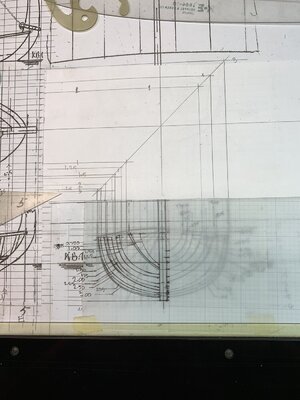
plan and body plan:
I am able to directly draw the horizontal points from the shear plan on the left to the body plan for those vertical positions.
Here are the full set of major stations from both the stern and stem views on the body plan.

I will place another small piece of semi-transparent drafting paper over the hull plan and trace one hull line, flip it over and trace the other corresponding line, and then give some width to the "frame" at that station. . . . over and over until I have this set completed and use those to cut a set of cardboard bulkhead frames to see how they fair out. This will also give me an idea of the need of intervening bulkhead frames smoothing the curves of the planking strakes stem to stern.
It is interesting for me to see some jumps or gaps between the lines which I wold not have suspected at first viewing of the half body plan from above. I would have thought that there would have been a more regular spacing between these curves. These strange spacings are most apparent in the aft stations but rechecking so far at this point says this is correct. . . being Swedish I am still not convinced that there is not an error in take-off somewhere. . . maybe in the ghost of a drunken sailor singing and staggering along the dockside of my drafting table.
When all is fared out I will make a decision on planking widths and the number required to mark those onto the edges of the bulkhead frames.
With Christmas in memory now, we can all look forward to a hopefully good New 2022 Year. Peace, Health, and Happiness to all! Rich (PT-2)






